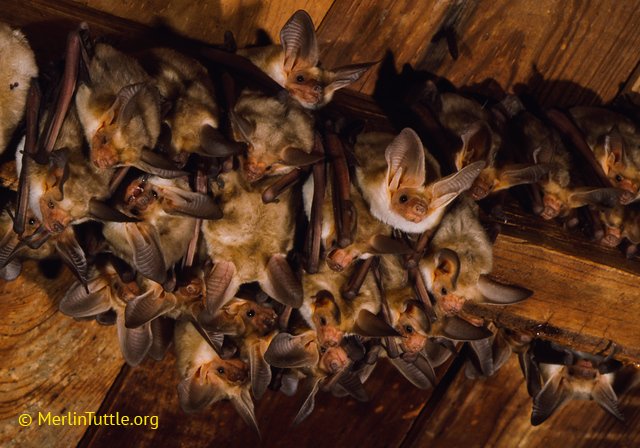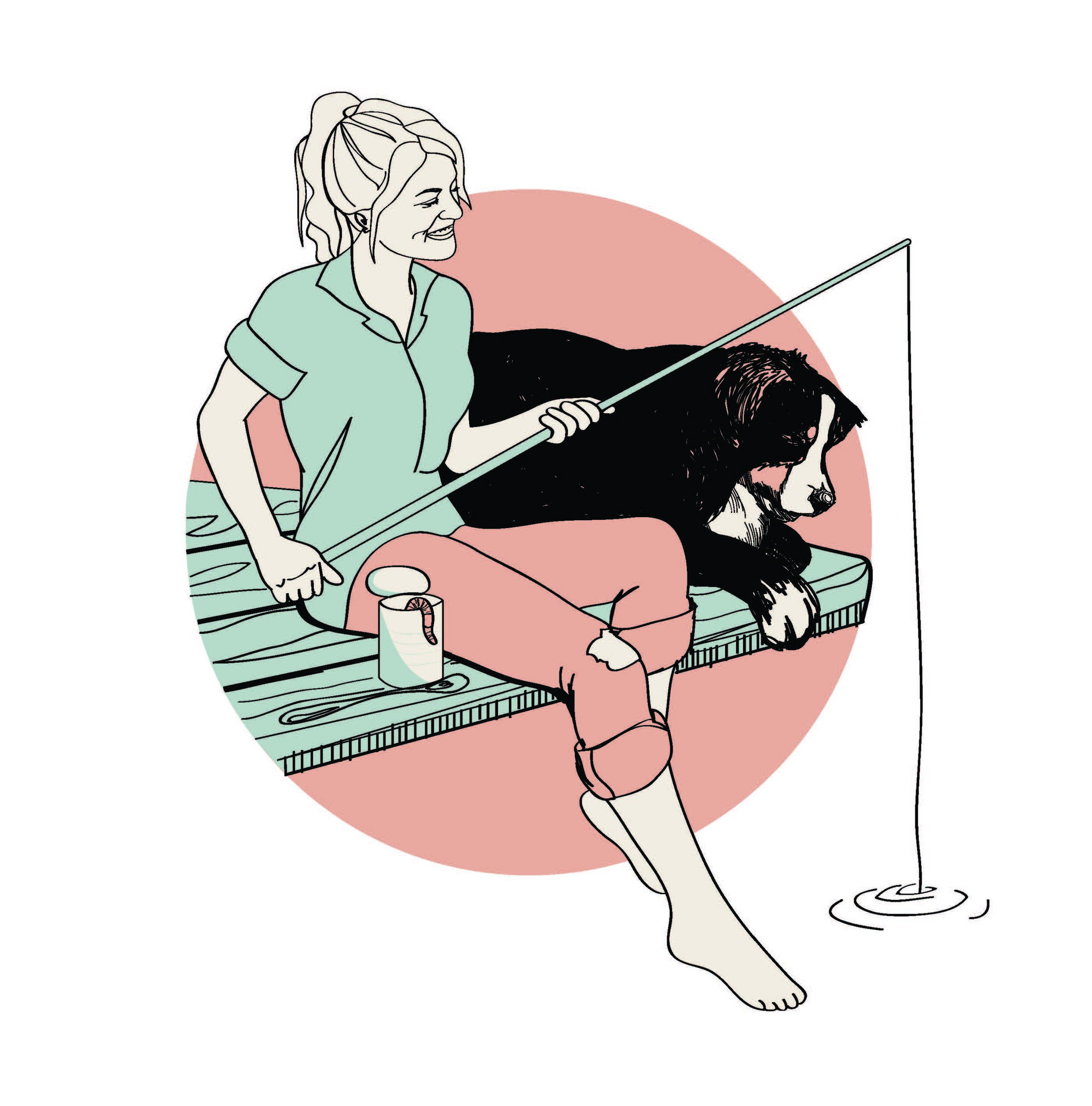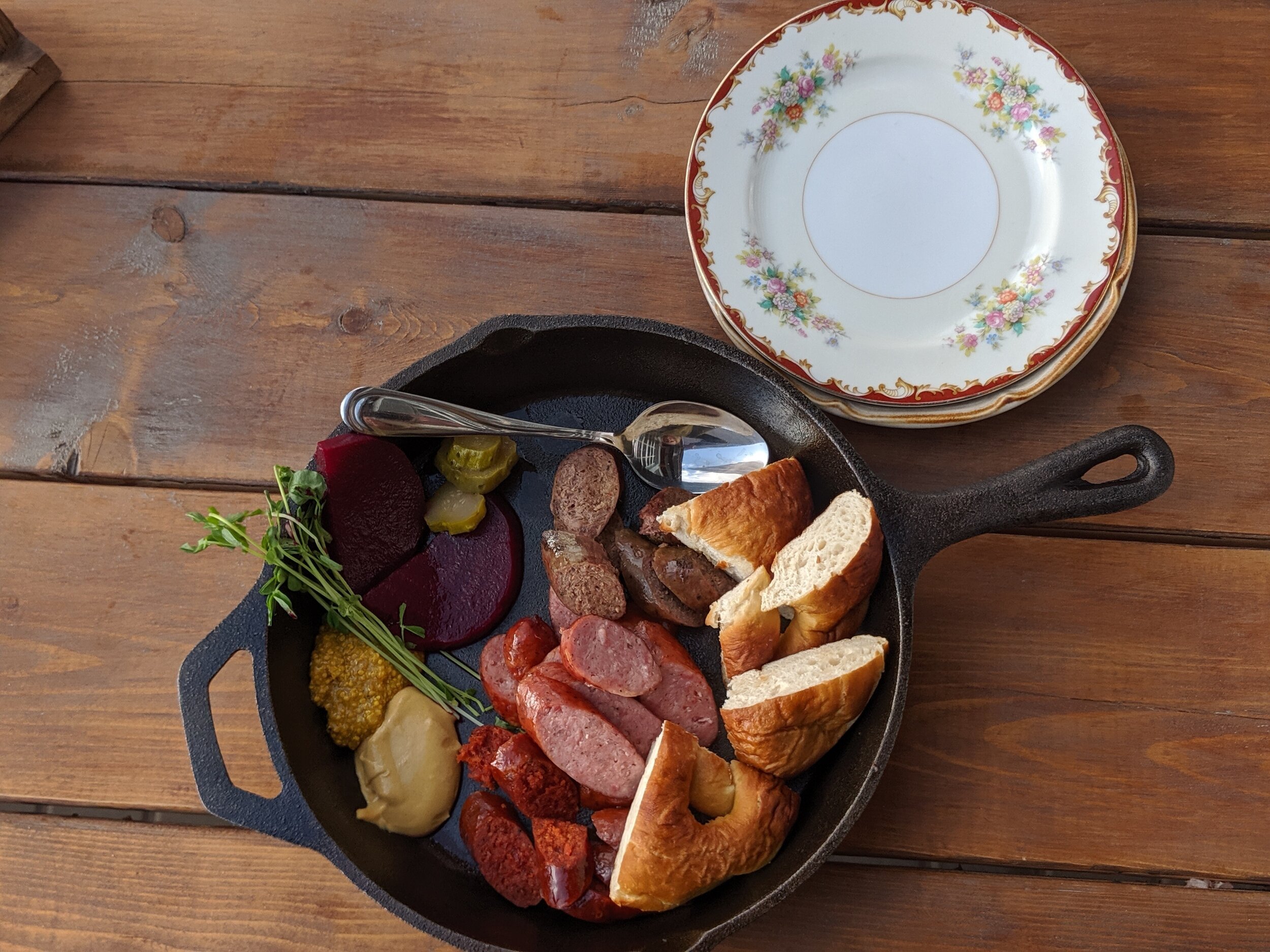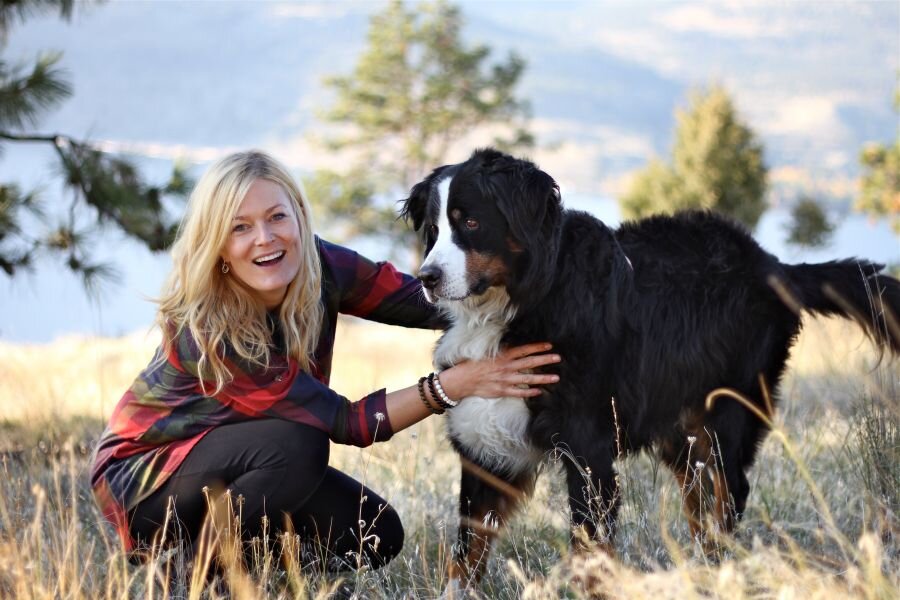Enjoy Bat Encounters in the Okanagan
The dry interior of BC doesn’t just have wine, it also has the highest diversity of bats in all of Canada. It is a paradise for nature lovers who seek out amazing wildlife encounters after dark.
Enjoy the Battiness
The dry interior of BC doesn’t just have wine, it also has the highest diversity of bats in all of Canada. It is a paradise for nature lovers who seek out amazing wildlife encounters after dark. All 14 bat species in the Okanagan eat insects and are affectionately called ‘swallows of the night’ by nature enthusiasts. Their diet includes insects like mosquitoes and agricultural and forestry pests. They provide Canadians with millions of dollars in natural pest control services.
Hibernating Bat - Photo by Eduard Kyslynskyy
Bats are found in natural and urban areas near lakes, ponds, and wetlands throughout the Okanagan. They are amongst our most common wildlife.
While visiting the Okanagan, be sure to visit the lakeshore during the first hour after the sun sets, on warm evenings, and look for bats. Bats drink while in flight by dipping close to the water. It’s one of the first things they do when they wake up at the end of the day.
Photo by Destination BC/Joann Pai
Photo by Indigenous Tourism BC / Indian Grover Riding Stables
In Canada, there are two bat species that are only found in the dry interior of BC. The Spotted bat which is unique, with black and white fur and enormous ears. It is among the rarest bats in arid regions and uses echolocation calls (a form of sonar) that are audible to humans. The Pallid bat, which in Canada is only found in the South Okanagan, eats small insects while flying and often large prey such as scorpions. They appear to be immune to the venom of their prey.
Pallid Bat
Spotted Bat, Photo by Merlin Tuttle©
Along with observing bats along lake and river shorelines, if you are interested in bats and want to learn more about them during your time in Okanagan, visit the Peachland Visitor Centre. The centre is home to a maternity roost of almost 2000 Little Brown Myotis and Yuma bats. Most evenings from June to August, you can participate in a bat count, watching bats emerge from their roost in the attic and counting them as they emerge.
Other batty activities visitors and locals can enjoy are:
Peachland Historic School - Visit the visitor centre to learn about bats. Take a walk along the Bat House Interpretive Trail. See the bat colony via webcams. Count bats as they emerge from the attic roost in the evening. Participate in their summer programs.
Kelowna’s Environmental Education Centre - Located at Mission Creek Regional Park, visit the ‘Bats: Out of the Darkness’ exhibit until mid-July. Sign out a discovery bat pack while there.
Osoyoos Desert Centre - Visit the centre to learn about bats that are unique to the desert.
Vernon’s Allan Brooks Nature Centre - Visit the nature centre to learn about bats. Participate in a summer bat talk and a bat count.
Contact the BC Community Bat Program (www.bcbats.ca) for information on bat counts occurring at SunOka Provincial Park, Okanagan Lake South Provincial Park, and Fintry Provincial Park.
Ask your resort/hotel if they have a bat roost on their property where you can see bats. Remember that bats are wild animals. Keep your distance and never touch a bat. It is illegal to harass or kill a bat in BC.
Participate in Annual Bat Counts (June - August). This involves sitting outside a bat roost and counting bats as they come out for the evening to hunt insects. Learn more at Counting bats - BC BATS
Unfortunately, bats are in trouble, and half of our bat species are listed as ‘at risk’. The majority of BC bats give birth to only one pup per year, and only about half of those young make it through their first winter. All kinds of things affect bats, including habitat loss, wind turbines, persecution by people, and susceptibility to White-Nose syndrome (WNS). WNS is a deadly disease caused by an introduced fungus that decimates bat populations.
Bats are an essential component of our healthy Okanagan ecosystems and provide important control of agriculture and forest insect pests and a natural method of control of mosquito populations. Visitors can help bats by learning more about them and supporting bat conservation. Learn about what to do if you have found a bat by visiting the Bat World Sanctuary resource.
Take the 7 Affrimations for 7 Generations Thompson Okanagan Regional Pledge to commit to caring for the land, animals, like bats, and communities of this region to ensure they continue to be prosperous for generations to come.
BC Community Bat Program (BCCBP)
The BC Community Bat Program is a network of community bat projects across BC, carried out in partnership with the Ministry of Environment. In the Okanagan region, we work with landowners to protect their bat roost sites and use bat-friendly exclusion methods, document the number of known roost sites in human-made structures, promote citizen science such as bat counts to monitor bat populations and White-nose Syndrome surveillance at active bat roosts, train Bat Ambassadors, and work with many partners towards implementation of Bat-friendly Communities.
Taking the Pledge for Sustainable Tourism
Seven affirmations to live by in order to practice sustainable tourism.
7 affirmations for 7 generations
“Sustainability means meeting our own needs without compromising the ability of future generations to meet their own. ”
Every Year
Sustainability is a widely used term that can mean many things to individuals. We are encouraged to live in the present and enjoy the moment. This is important, but why not live in the present with the ambition of sustaining the future? Sustainable Tourism encompasses the mindfulness of a traveller and a tourist exploring, in one’s own region or another, in order to leave no trace as they wander.
In order to practice sustainability in our own communities and others, there are seven affirmations to keep in mind as we go about our daily life. These affirmations were inspired by the philosophy around the Seven Generations Principles engrained in North American Indigenous communities. As years have gone on, the principles have been adjusted to suit various communities and companies. Now it is time for us to make these affirmations a lifestyle.
True Roots
When exploring a new community, aspects may be different from what you are used to. People may interact differently, move at a different pace, and eat different things. Try to embrace these differences and enjoy the new experiences while you are there. While being respectful of culturally sensitive areas, seek out the local activities and traditions that communities have as it may give you a new perspective and offer a great time.
Boundary Country - @kellyleannephotography
Tread Lightly
This phrase refers to the fact that what we do, destroy, and take advantage of today will have a lasting impact on forever. The earth takes thousands of years to recover from damage, and sometimes never does. When experiencing nature in your own community or in another, be mindful to leave no trace. Watch your step, and stick to the path. By using products like lake friendly sunscreen and other natural materials that are friendly for our lakes and the species within, we are protecting and preserving these spaces. We are so lucky to be able to enjoy and explore communities and nature, so let us not take that opportunity away from future generations. Ask a local if you are unsure about any etiquette or protocol in a new community, we are all in this together.
Murtle Lake - @ralansch
Be a Good Neighbour
This signifies the importance of appreciating not only our human neighbours that either live or run a business next to us, but also the animals, plants, and ecosystems that live around us. Pick up after yourself and be respectful of the communities you are in. Appreciate the differences the environment around you encompasses and love everyone for who they are no matter what. While travelling to the Thompson Okanagan we hope that you feel just as comfortable and accepted here as you do at home and in turn treat it the same as your home.
Kelowna Pride
Travel Safely
It is important to go with the flow, follow your heart, and desires while travelling, but also a good idea to stick to the maps and be prepared. Do some research before entering a new region to ensure that you are aware of the guidelines, weather systems, and potential risks. You are not expected to be an expert, just to keep yourself safe and prepared as you never know what may arise. Exploring is one of the greatest opportunities and one that we hope people from outside the Thompson Okanagan and within will take advantage of in a safe way. There is no shame in stopping at visitor centres to ask for directions and tips if needed. Their staff is there to support you and enrich your experience if possible.
Highway 3 - @joodeebee
Live in Harmony
We don’t only share our favourite places with other people, but other living species as well. We can appreciate them from afar, but never get in their way and jeopardize them. Follow waste and fire guidelines while in campsites and communities. The rules are there to keep us safe and protect the areas we are visiting.
Okanagan Valley - @sevenintheocean
Choose Local
Local businesses work extremely hard to create their own business and provide you with the best service and products available. It is important to support and appreciate them. Ask a local for an area's hidden gem so that you don’t miss out. There are a variety of local restaurants in our communities that offer diverse and delicious food options. It could be fun to expose your palate to other local flavours.
Kelowna Farmer’s Market - @drchelseagronick
Educate Others
Anything worth knowing is worth sharing. We all have experiences whether it be in a home community or somewhere else. People want to hear your favourite and least favourite experiences, so they can learn from them. Encourage others to enjoy places you have been to and practice sustainable tourism in one’s home community and others.
Mt. Robson Provincial Park - @ghostbearinstitute
For many reasons these affirmations are phrases to live by and we want you to show us how you are doing your part to incorporate them into your lifestyle. There is a pledge that you can sign up for that you agree to follow the seven affirmations. We want to see your journey and encourage you to post pictures with the #tourismpledge to show others how you are doing your part.
Written by Jenna Labossiere
Born and raised in Kelowna, Jenna loves being able to be a tourist in her own backyard. As a Brand Ambassador for the Thompson Okanagan region, she hopes to be able to showcase the region’s local businesses and natural attractions in order to encourage others to take the opportunity to enjoy.
Why Getting From Osoyoos to Kelowna on Electricity Has Never Been Easier
A big part of building a responsible and sustainable destination includes creating a transportation network that’s suited for the next generation of tourism.
That’s why when my partner and I were putting together a road trip up Route 97 through Washington and onwards to Kelowna, we thought it was important to find a full or partial-electric vehicle to take with us to experience the hard work this region has been doing to make it accessible for future road trips.
With a 2020 Volvo XC90 plug-in hybrid in tow, we crossed the border at Oroville-Osoyoos (a much easier crossing than the Peace Arch in Blaine) and were impressed with just how easy charging was at almost every turn.
Nk’Mip Cellars
Our first day’s itinerary had us just over the border at Nk’Mip Cellars, Canada’s first indigenous winery. The Osoyoos Indian Band owns and operates the grounds, which has slowly turned into a destination itself with Spirit Ridge Resort, a nine-hole golf course and the Nk’Mip Desert & Heritage Centre on the northern side of the property. They’ve also installed two Tesla charging stations, which we were told get plenty of use in the busy season.
Just down the road in the city centre, we charged our Volvo overnight at the Watermark Beach Resort, which has three stations (two Tesla, one regular). We imagined that in lesser weather, the covered, indoor charging parking would be quite an asset.
As we began the drive north, we were surprised to see just how many wineries and tourist destinations embraced EV driving with charging stations just about everywhere we went. Signage along Route 97 indicated charging options every few miles with more sporadically spread out as the highway opens up north of Oliver.
We stopped for a midday tour and lunch with Ruth Hanbury, then-president of Liquidity Winery in the hills outside Okanagan Falls. As we were chatting about the new age of road tripping, she mentioned that the winery has seen an increase in EV tourists over the last year (Liquidity has actually had their charging station for a number of years as part of a larger national EV initiative.)
Speaking of driving, the northern third of Washington State offers an easy before or after trip just across the border, especially driving electric.
There are currently 21 charging stations operating from Winthrop in the Cascade foothills to Davenport in the far desert. Much of the development is thanks to Plug-In North Central Washington - an all-volunteer, non-profit organization dedicated to developing EV tourism in their part of the state. A group of eight enthusiasts made up of retirees, industry advocates and general citizens have built a reliable and technical network of chargers for virtually any EV. It makes a trip starting in Seattle or Portland quite easy. They’ve literally mapped out charging stops along the way for EVs of almost any battery capacity.
Getting from northern Washington to Kelowna on one charge is rather simple too. There are no shortage of Teslas or other long-range EVs making the trek and as a tech industry hotbed, Kelowna is full of charging stations, especially before venturing further north.
Tswip charging station
Resources for EV drivers:
If you’re new to EV driving, the one thing you must do is download the Plugshare app. As the most comprehensive and continuously updated map documenting charging stations throughout Canada and the US, this is the most surefire way to ease “charging anxiety”. Much of the data is user-generated and you’ll find out which destinations have chargers, if there are any fees involved and if any are currently out of service.
Power Trips Okanagan has a fleet of Teslas available for rental and can arrange pickups in Kelowna or Vernon.
About Geoff Nudelmann
Geoff Nudelman is a copywriter, journalist and brand strategist tackling the globe one soccer match at a time. He travels in search of lesser-known destinations and the stories that bring these locales to life. He currently writes for Barron's, Lonely Planet and AskMen.com. He lives in Portland, Oregon.
Building a community one brew at a time
A Kelowna-based brewery is hitting all the points with its commitment to community - not to mention first-class brews.
Illustration by Lisa Ranney
It’s not very often that a business is validated by a stranger who has no input or buy-in to your plan, but for Susi Foerg, an ah-ha moment helped coalesce everything she envisioned for her dream.
Four years ago, Foerg was on a weekend trip to the Sunshine coast when she stopped by Persephone Brewing Company for a pint. Persephone Brewing Company is well known by craft beer lovers for their well-developed brews, but what struck Foerg was the balance between beer and community. You see, the microbrewery does far more than just brew beer—it’s also a self-sustaining 11-acre farm with a focus on community agriculture. Foerg was inspired—so inspired in fact, she started to ruminate on how she could replicate the good work being down in Gibsons right here in Kelowna.
With a background in finance and banking, Foerg had a deep understanding and respect for the requirements of developing a sound business model. But she also knew that one of the intrinsic values of a business owner is understanding customer needs.
“I had always enjoyed working with clients, listening to their challenges and helping them find solutions to their banking needs,” she says. Applying that customer service-driven approach, Foerg developed a business plan for a farmhouse brewery in Kelowna that would focus on community, environment and employees as business priorities.
However, as in life, business plans sometimes must change. The Provincial Agricultural Land Commission, also known as the Agricultural Land Reserve or ALR, exists in British Columbia to assure the preservation of agricultural land. Requirements for building a farmhouse brewery in Kelowna on existing agricultural land meant very stringent regulations would need to be met, including the production of 50 per cent of the grain that was needed for the brewery would have to be grown on the land.
“That meant I’d need to grow about 20 acres of grain,” says Foerg ruefully, which was not a financial option. So, as entrepreneurs need to be nimble, she started thinking about ways to fine-tune the values of Persephone Brewing—which were non-negotiable for her own vision—and develop a brewery that incorporated those ideals.
“I tweaked my business plan and decided I need to do some research to make sure I had developed the plan appropriately,” says Foerg. In order to take the leap, she decided to rent out a suite in her house and go to Vancouver for several months and work at a brewery there to develop a deeper knowledge and skill set. But how to find a reliable tenant? (and here’s the ah-ha moment …)
“I decided to post my suite on my private social networks rather than publicly,” says Foerg. Meanwhile, a local woman who had recently escaped an abusive relationship was about to lose her short-term emergency housing and faced homelessness. Through a series of conversations, Foerg was able to provide safe housing and assure herself that her home would be cared for while she perused her dream, while providing the woman a safe and anonymous place to rebuild her life. Foerg’s decision to change her career and build a business that would focus on community, impacted a stranger in a deeply meaningful way.
“That’s when I knew I was on the right path,” says Foerg.
Taking what she learned from her time researching community-based social enterprise, as well as her time at Electric Bicycle Brewing in Vancouver, Foerg returned to Kelowna ready to hit the ground running.
Four years later, Rustic Reel Brewing is open for business, featuring local products and leading the charge on building relationships with supporting the local community, the environment and employees.
“As a business owner with 23 employees, it’s my responsibility to learn from experiences and provide a job that works around people's lives—the brewery is my life, not my employees’,” she explains.
“I want any employee to understand that I know that this professional relationship has to work so that people are happy,” she continues. With that in mind, Foerg has actively implemented supports for employees including extended health care benefits from the local Chamber of Commerce, as well as a dedicated time to embrace a work-life balance as a team, including group hikes and get-togethers.
“It’s important to me that we integrate staff reflection into our work, and I make sure I include self-reflection as part of my professional development,” says Foerg. “I need to be present and aware, and assure that all employees, no matter their role, feel validated and—even when time pressures mean I have to prioritize something else ahead of their needs—that they’re not unimportant to me.
“It’s easy to feel like you’ve failed every day but being a business owner means everything is a learning process with constant development and evaluation.”
With the brewery humming and the employees well cared for, it’s time to look at the community aspect of the brewery – and what a community it is. “The number-one priority for me in my personal life is animal welfare and cruelty,” says Foerg. “I never use products at home that were tested on animals, so why would I allow them to be used in my business?” The answer is a resounding no, which means nothing in the building is tested on animals. Ever.
The airy building seats 100 inside and 60 on the dog-friendly patio. The design of the brewery is not nautical, but meant to showcase the owner’s love of fishing, as well as the organic interplay of a rustic club house. The tables, the flight boxes and the wall paneling are all re-purposed by pallets and constructed by Foerg. “I sanded and planked all those,” she laughs. The design and the building is communal and family friendly, as well as welcoming to the canine members of the family. In fact, sadly, Walter, the Bernese Mountain dog featured on the design for the brewery created by local designer Lisa Ranney, passed away at the age of 11 shortly before the brewery opened, although his memory and influence lives on.
Susi and Walter, her loyal companion and the best brewery dog.
“I love to fish and this place was meant to be female friendly, so I wanted to incorporate design and colours that embody those ideas,” says Foerg. The brewery also features the Tackle Box, a market space that developed because, “we wanted to have a place where local market items could be showcased,” says Foerg.
“We feature a variety of different local products, including Taste of the Okanagan, which is a mother-daughter team whose products we use on our menu.” Other local menu items include pates, meats and cheeses from supplies across the Okanagan and lower mainland, as well as local grains. During the brewery production cycle, once the grains are spent, the environmental aspect of Foerg’s business plan comes into play. “We have two local farmers who pick up our spent grains for animal feed, but we produce breads, muffins, pretzels and other baked goods in house, including vegan and gluten-free options.
“We continue to grow and continue to focus on local suppliers,” says Foerg. “What we have on our menu and what we want to explain about the origins and sources of our product is important.”
At the end of the day, bring community together has been and is a priority for Foerg. “When you can see the impact of your work, that’s when you know you’re doing the right thing.”
About Cait Wills
Born in Vernon and raised around the world, Cait Wills is a passionate advocate for the Thompson Okanagan region. As Storyteller Specialist for the Thompson Okanagan Tourism Association, Cait is eager to showcase people, places and things in the region. If you have a suggestion on something you would like to know more about, please drop her a line at media@totabc.com.




























